Impulses
Publications
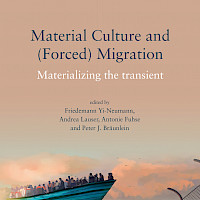
Material Culture and (Forced) Migration. Materializing the transient. London: UCL Press.
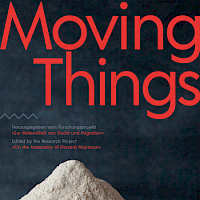
Moving things. Göttingen: Wallstein.
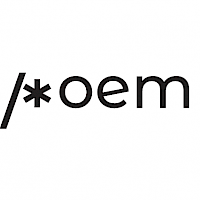
The thing with forced migration and museums. Hamburg: POEM.
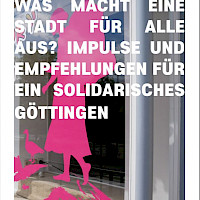
Migrantische Alltagserfahrungen in Göttingen. Ausgrenzung, Allianzen und die Schaffung 'eigener' urbaner Orte. In: Sabine Hess (Hrsg.) Was macht eine Stadt für alle aus? Impulse und Empfehlungen für ein solidarisches Göttingen. Göttingen: Center for Global Migration Studies. Universität Göttingen. S. 50-52.
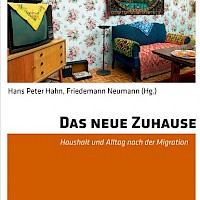
Das neue Zuhause. Haushalt und Alltag nach der Migration. Frankfurt: Campus.

„Kein Läufer, kein Balkon. Eine Phänomenologie des Ankommens in einer (post‐)migrantischen Gesellschaft“. In H. P. Hahn & F. Neumann (Hrsg.), Das neue Zuhause. Haushalt und Alltag nach der Migration. Frankfurt: Campus, S. 141-158.
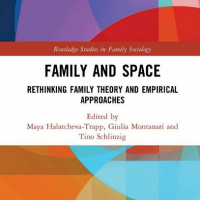
"Between Things. Situating (Post-)Migration and Material Culture in Social Space." In M. Halatcheva-Trapp, G. Montanari, & T. Schlinzig (Hrsg.), Family and Space. Rethinking Family Theory and Empirical Approaches, London: Routledge/Taylor & Francis, S. 34-45..
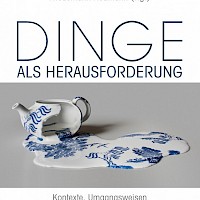
„Materialität − Referenz − Rhythmus. Einschreibungen, Brüche und Verschiebungen des transkulturellen Alltags“. In H. P. Hahn & F. Neumann (Hrsg.), Dinge als Herausforderung. Bielefeld: transcript, S. 33-48 (open access).
Inspirations
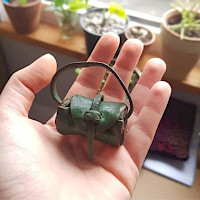
“[The CDs] are my treasure and the string which connect me to my past and life in my country. I feel I would lose part of my history if I lost them.”
Inspired by her personal story of an item she carried with her on her way from Damascus to the UK, Rasha Youssef, master student of Global migration and social justice in Glasgow, explores the stories of refugees, of the objects they brought from home. She examines the memories and emotions these pieces of hope and pain carry within.
As part of Rasha Youssefs dissertation, this project reveals how personal belongings and the feeling of being at home are interconnected. The project aims to provide a space for refugees to tell their individual stories and explore their own, personal items.
Click here to learn more about the project.
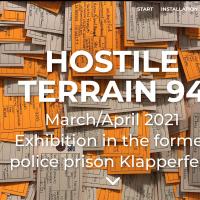
Hostile Terrain 94 is a global pop-up Exhibition about America’s Humanitarian Crisis at the Southern Border. The project aims to raise awareness about the realities of the U.S./Mexico border, including the death and suffering that have been happening daily due to the Border Patrol policy known as “Prevention Through Deterrence” (PTD). It is a participatory art venture organized by the Undocumented Migration Project (UMP), a non-profit research-art-education-media collective, which documents fatalities since 2009, directed by the anthropologist Jason de León.
The exhibition, shown in more than 150 locations worldwide (see list of hosting partners), is a participatory, democratic, and inexpensive public display. In the various localities, communities, activists, and scholars will adapt the display and assemble a plurality of perspectives.
In Frankfurt, the scope of the exhibition will be enhanced to demonstrate how different border policies affect and transform the policies in other regions. Due to the pandemic, the exhibition is expected to open in April 2021. However, events are already taking place online.
There is also an interactive experience of Hostile Terrain 94 for cell-phones users.

Wie viele Geschichten kann ein Museumsobjekt haben?
Ausgangspunkt für das Projekt ist eine Sendung von BBC Radio 4 aus dem Jahr 2010 (und das daraus entstandene Buch): "Eine Geschichte der Welt in 100 Objekten", erzählt vom damaligen Direktor des British Museums, Neil MacGregor. Die Sendung bot eine Plattform für das British Museum und führte die Idee des Museums als "Blick aus dem Nichts" und von überall gleichzeitig wieder ein. Museen wurden als Orte präsentiert, von denen aus man die Welt sehen kann, ohne jedoch darüber nachzudenken, wie die Institution selbst die Objekte beschafft und arrangiert hat, um eine eigene, scheinbar universelle Erzählung zu schaffen.
Das dynamische, langfristige und vielformatige Publikationsprojekt "100 Histories of 100 Worlds in 1 Object" hofft, mehr als nur eine alternative Geschichte des British Museum zu erreichen. Stattdessen arbeiten seine Mitstreiter*innen auf eine Verschmelzung von Objektgeschichten und musealen Hinterlassenschaften durch und mit transnationalen Wissenschaftler*innen, Kurator*innen und Künstler*innen im und aus dem "Globalen Süden" hin. Erste Objektbiographien in Form von Essays sind bereits hier verfügbar. Es bleibt spannend, mitzuerleben, wie sich das Projekt weiter entwickelt!

bi'bak (Turkish: have a look) is a collective and project space based in Berlin with a focus on transnational narratives, migration, global mobility and their aesthetic dimensions.
The exhibition "BITTER THINGS - Narratives and Memories of Transnational Families" is a research-based project that examines the effects of labor migration on motherhood and family from the perspective of migrant workers and their children. After the opening in Istanbul, the exhibition was shown in Berlin, Cologne, Oberhausen and Frankfurt and is currently in Timisoara, Romania.
A booklet in german langage is available for download here.

Der Wiener Konzeptkünstler Thaer Maarouf spricht im Rahmen dieses Projekts die Themen Flucht, Migration und Asyl(politik) an. Er hat zwölf Pakete an Staatsoberhäupter in aller Welt verschickt - darin die Schuhe, die Menschen auf der Flucht getragen haben.
Als Objekte sind die Schuhe eine symbolische Repräsentation der persönlichen Schicksale einzelner Geflüchteter, die auf ihrer langen Reise an einem bestimmten Punkt angehalten wurden, bevor sie ihr eigentliches Ziel erreichen konnten: einen Ort, der Sicherheit und Schutz bietet. Während die Schuhe als Teil eines Kunstprojekts problemlos Grenzen überwinden und auf legalem Weg sicher an ihr Zeil gelangen können, sind Menschen auf der Flucht oftmals Gefahren und unüberwindbaren Barrieren ausgesetzt.
Neben der Teilnahme an einer Ausstellung in Wien 2017 haben Jakob Haueisen (Regie) und Markus Klaes (DOP) einen Film über "Dirty Messages" gedreht.

Die Ausstellung "FASAHAT: weil es unsere Geschichte ist" ist aus einem von der Künstlerin Nahed Mansour initiierten, partizipatorischen Kunstprojekt hervorgegangen, in welchem Bewohner*innen des AWO Refugiums in Berlin-Kladow in ihrer Unterkunft intervenierten.
Während in Museen historische Artefakte von Menschen und ihrer Gegenwart isoliert bleiben, werden in den Unterkünften Menschen von ihrer Geschichte getrennt. In dieser Ausstellung schaffen die Künstler*innen von FASAHAT einen Zwischenort in der Galerie im Turm, an dem sie mit hybriden Monumenten einen Brückenschlag zwischen Vergangenheit und heutigen Lebensrealitäten ermöglichen. Die Rezension von Christina-Marie Lümen mit dem Titel "Debatte und Hoffnung" ist zugleich eine umfangreiche Dokumentation der bis zum 25.10.2020 gezeigten Ausstellung. Die Autorin stellt darin resümmierend fest: "Die Stimmen [der Ausstellung] sind vielseitig und nicht letztlich festgelegt, wie auch die Ausstellung selbst. Trotz ihrer unaufgeregten Form sind beide stark und bestimmt."
Hier geht's zur Rezension, eine Video-Reportsage von Amal! Berlin zur Ausstellung finden Sie hier.

Das Projekt „Sharing Stories. Dinge sprechen“, das von 2015-2017 am Welt Museum Wien angesiedelt war, hat es sich zur Aufgabe gemacht, partizipativ neue Formen des musealen Sammelns zu erproben und bisherige Sammlungspraxen etablierter Institutionen zu hinterfragen. Ziel war es zum einen die Dinge zum Sprechen zu bringen, zum anderen diese Dinggeschichten zu teilen. So sollten Debatten die lediglich „Andersartigkeiten“ betonen durch Perspektiven auf materielle, diverse und transkulturelle Bezüge dialogisch unterlaufen werden. Die Vielfältigkeit der Bezüge zu den Dingen spiegelt letzten Endes auch die Vielfältigkeit und Komplexität von Gesellschaften wieder, wie dieses Projekt anhand von zahlreichen Objektgeschichten verdeutlicht.

The project “Outcast Europe“ collects and exhibits objects that documents the historical and current narratives from people on the move in Europe took with themtowards Europe. Itand uses thetheir objects as starting points to explain various human experiences during flight and migration. The project examines which functions objects can acquire on ways of migration and what can be learned out of the stories for today’s societal processes. Through the category “Share your Story” it is furthermore possible to upload own objects and stories that extend the collection. Click here to have a look at the website.

Transient Matter is an exhibition based on ongoing fieldwork by Yannis Hamilakis on Lesvos, Greece, in collaboration with people in transit and many local people. The display sheds light on the region and the material aspects of border-crossing and migration. The project, therefore, asks: "What is to be done with the material remnants of border crossing, like life vests, things often designated as 'environmental pollution'? And what about the new materials and edifices erected by authorities or produced by migrants themselves, be they artworks, crafts, or mundane and functional items? What happens when these things become museum objects?"
The exposition opened in the Haffenreffer Museum of Anthropology's gallery on the Brown University Campus, Rhode Island (US), on February 20th, 2020. Due to the COVID-19 pandemic, the team developed an online version of Transient Matter, which is now available. Information about an edited volume on the topic you find here.
The Curators are: Yannis Hamilakis, L. Darcy Hackley, Sherena Razek, and Ayşe Şanlı.

by Lea Frehse, Henning Susebach (Text), Jewgeni Roppel (Bilder), ZEIT ONLINE 2018/37
“What is your most German object?” – In their article, Frehse, Susebach, and Roppel pose this question to people who already live a few years in Germany since they migrated. The authors asked them about the objects that display their new life and the experiences they made in Germany. Besides a binder, in which numerous documents of the German bureaucracy have their place, a mug that was taken home from a Christmas market in Hamburg and a German cheese slicer are presented. The article takes these further items as a starting point for stories and anecdotes. Interestingly and entertainingly, the processes of arriving and living in Germany are depicted through the things that became important in people’s new lives.

How do museal laboratories work? What are their chances, what are possible points of criticism and how can they be contextualized in global and political museum-related debates? Di Blasi addresses these questions in her 2019 published monography that deals with the Humboldt Lab in southwestern Berlin which combines the domains of art, design and social and cultural anthropology (published by transcript Verlag). Ina Heumann of the Museum of Natural Science in Berlin reviews the monography, published by Transcript Verlag for hsozkult and gives an outline of their most important aspects. Her text gives a deep insight into Di Blasi’s work and is therefore interesting for everyone who would like to engage with the German museum-landscape, the connection between Social and Cultural Anthropology and Art and the (im)possibilities of museum-laboratories, e.g. in the negotiation of essential topics like postcolonialism. Click here for the review.

Exploring Materiality and Connectivity in Anthropology and Beyond / Edited by Philipp Schorch, Martin Saxer and Marlden Elders
The collected edition Exploring Materiality and Connectivity in Anthropology and Beyond takes up the challenge of conceptualizing things and their affective connections to their surrounding lifeworlds. Societal processes and individual life-realities are described through diverse ethnographic case studies, in which ‘tangible’ objects and their impacts on humans and spaces as well as materiality in the form of fog and smoke, that distances itself of the strict dichotomy of ‘object’ and ‘reference point’ are examined. The authors furthermore describe the procedure of the symposium, where the research studies were presented, and talk about several workshops, in which they interacted actively with objects and their stories. Ultimately, the concept of “thing ̴ties” is presented, which is based on the empirical results of the research studies and expresses the interdependency between objects and their connections to different worlds of things and humans. Click here for the book.

The Los Angeles Times on a janitor who preserved and documented what has been taken away from migrants in border custody.
What is the relation between deprivation of rights and the dispossession of belongings? Tom Kiefer, a former janitor of a migration detention center in Arizona, close to the US-Mexican border, and photographer has given tangible witness. He collected and documented personal belongings that people in border custody were deprived of because these items have been declared “lethal” or “unnecessary” by border officials. Among these objects where essential medications, sanitary products like toothbrushes, food and water cans that people brought to make sure that they have enough water while crossing the desert borderlands. Moreover, people carried along music CDs and things related to loved ones, like a diary dedicated to a woman named “Blanca”. To look at what has been taken away from people makes the consequences of illegalization and dispossession alarmingly palpable.

Australien hat eine lange und komplexe Migrationsgeschichte. Mit dieser und der daraus resultierenden Diversität der australischen Gesellschaft beschäftigt sich seit 1998 das Immigration Museum in Melbourne. Neben den Ausstellungen wie „Immigrant Stories and Timeline“ oder „Identity: yours, mine, ours“, organisiert das Museum unterschiedlichste Aktivitäten, an denen die Besucher*innen teilnehmen können. Die Aktivitäten entstehen in Zusammenarbeit mit verschiedenen Akteuren: Künstler*innen, Wissenschaftler*innen und den Menschen vor Ort. Aus dem Projekt mit der Schriftstellerin und Kulturhistorikerin Maria Tumarkin und sound artis Thembi Soddell entstand „The Unending Absence“ eine inspirierende Reihe an Audio-Clips aus der Perspektive von Migrant*innen.

Diese Webdokumentation informiert über die Geschichten von Migrant*innen, die über verschiedene Wege in die DDR gekommen sind. In Videoclips erzählen Menschen aus Äthiopien, Vietnam, Chile, Mosambik und der Türkei von ihren Erfahrungen im sozialistischen Bruderstaat. Die Hintergründe der Migration in die DDR werden durch Einführungstexte, Akten der DDR-Behörden und Bilder erläutert. Die Webdokumentation vermittelt durch die Verwendung dieser unterschiedlichen Quellen ein vielschichtiges Bild von der Migration in die DDR.
Die Webdokumentation "Eigensinn im Bruderland" finden sie hier.

In this stunning, partly personal piece, the anthropologist Dimitris Dalakoglou and the photographer Yannis Ziindrilis address the ethical challenges of the visual representation of the so-called refugee crisis. They tackle the issue of how scholars can contribute to an understanding of refugees that is antithetical to the predominant ones, which portray (forced-) migration mostly as a threat. Dalakoglou and Ziindrilis choose the medium of the photo essay, a combination of text and image, to provide a perspective on the “refugee crisis” that directly connects it with the European political and economic crisis of the early 2000s. The pictures show the materialities of both crises together – the ruins of the political and economic crisis and the refugee camps – and thus bring forward the authors’ argument, that the “refugee crisis” is in fact an expression of the European political and economic crisis. Read the article here.

München war und ist Einwanderungsstadt. Aus dieser Perspektive erforschen seit 2015 das Münchner Stadtmuseum und das Stadtarchiv München gemeinsam die Geschichte und Gegenwart der bayerischen Landeshauptstadt seit dem Ende des Zweiten Weltkrieges bis in die Gegenwart. Die Ausstellung ist vom 21. September 2018 bis zum 29. Dezember 2019 zu sehen. Der an der Justus-Liebig-Universität Gießen promovierende Historiker und Migrationsforscher Francesco Vizzarri hat die Ausstellung besucht und bespricht sie auf hsozkult wort- und bilderreich. Abschließend benennt er ihr zentrales Element: Durch de-ethnisierende und transkulturelle Ansätze sei die Ausstellung keine 'xenologische' Präsentation von Gegenständen, kein Teil eines Museums, das ein Ort des Wissens und des Diskurses über andere sein will. Vielmehr sei sie als Labor, als 'sozialer Ort' der Begegnung und Diskussion gedacht, als Ort der Inklusion und nicht nur der (reinen) Integration, wo man in einem wahrhaft 'post-migratorischen' Sinne (nach)denken und voneinander lernen könne. Hier gehts zur Rezension.

Welchen spezifischen Zugang zur Vergangenheit ermöglichen Objekte? Welche vergangenen Begebenheiten können sie bezeugen? Wie unterscheidet sich der Aussage-Inhalt materieller Objekte von demjenigen, den Schrift- oder Bildzeugnisse vermitteln? Die Historikerinnen Leora Auslander und Tara Zahra folgen als Herausgeberinnen dem Anspruch, Vergangenheit und Wege der Überlieferung mit objektbasierten Herangehensweisen zu erkunden. Erschienen bei Cornell University Press.
Dr. Lisa Regazzoni vom Historischen Seminar der Universität Frankfurt hat den Sammelband für hsozkult rezensiert. Besonders nachvollziehbar erlaubt die Autorin einen Einblick in die drei Themenschwerpunkte des Buches, die die Bewegung von Objekten in verschiedenen Gewaltkontexten analysieren und bietet drei Lesarten an. Dabei betrachtet sie die Thesen der Autor*innen kritisch und stellt dennoch fest, dass die Publikation einen wichtigen und vielseitigen Beitrag leistet. Hier gehts zur Rezension.
(Bildquelle).

Was wird über Bilder in Themenausstellungen zu Migration inhaltlich vermittelt und welche Affekte werden über die formale Bildgestaltung aufgerufen? Das sind die zwei zentralen Leitfragen der Studie, für die insgesamt 814 Ausstellungen erhoben wurden. Erschienen im transcript Verlag. Violetta Rudolf vom Zentrum für Zeithistorische Forschung Potsdam hat die Dissertation, eine erziehungswissenschaftliche Studie, für hsozkult umfassend rezensiert. Ihr Text bietet einen fundierten Einblick und lässt erahnen, dass das vorgestellte Buch auch für fachfremde Lesende eine Bereicherung ist. Hier gehts zur Rezension.

Im Rahmen einer qualitativen Studie entwickelt Elena Höpfner nach offenen Interviews mit geflüchteten Menschen eine gegenstandsbezogene Theorie im doppelten Sinne. Sie untersucht, welche Dinge Menschen mit auf die Flucht nehmen und welche Rolle diese Dinge für die Flüchtenden spielen. Erschienen bei Springer VS. Hier gehts zum Inhalt.

Kritische Migrationsforschung, muss, so das Berliner Labor Migration, mit einer Kritik der Migrantologie und der von ihr geprägten Kategorien beginnen: Kategorien, die in den authentisch gehaltenen Geschichten der Wissenschaft re/produziert werden und das politische Branding der Bevölkerung nach ethnischen, religiösen oder kulturellen Identitäten erst ermöglichen. Die Autorinnen fordern eine radikale Kritik und werfen gleichzeitig die Frage auf, was von der Migrationsforschung bleibe, wenn jene Kategorien verworfen werden. Die BERLINER BLÄTTER erscheinen im Panama-Verlag. Hier gehts zur Ausgabe 65/2014.
Discussions
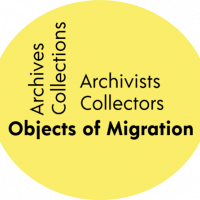
In a contribution to the Journal Visual Anthropology, the art historian Alma-Elisa Kittner (Justus-Liebig-University Giessen) focuses on different archives of migration, investigates various terminological, conceptual and material aspects of these endeavors, and addresses the distinction between archive and collection. Focussing on interdisciplinary perspectives on things she also raises the question if dignity can be displayed in material objects. In the course of her analysis, the collection format and research findings of the “On the materiality of forced migration” project are also discussed. Click here for the article website.

Diese Frage stellt sich bei "Have Your Passport Ready." Das vom britischen Knaïve Theatre beuftragte und geförderte digitale Theaterstück "Have Your Passport Ready. A new gaming adventure in the hostile environment." ist ein Virtual Experience Game über das Leben von Geflüchteten nach der Flucht und über die Erkenntnis, dass das Erreichen eines Asylortes nur der erste Akt auf einer brutalen Reise ist. Es ist ein interaktives, autobiographisches Werk der beiden in Syrien geborenen Brüder Khaled und Mohammad Aljawad, das für die Eröffnungssaison der Knaïve Theatre Presents: A Digital Lyceum und das vom Stand and Be Counted Theatre produziert wurde.
Ein Durchlauf durch Fragen wie Ich wurde verfolgt aufgrund von... Rasse/ Religion/ politischer Einstellung/ Sonstiges und Warnungen wie If you don't attend your designated appointment you will be deported, zeichnet ganz bewusst ein bedrohliches Szenario. "Have Your Passport Ready" wirkt absurd-provokativ bis entmutigend - und ist besonders aufschlussreich für diejenigen User*innen der Mehrheitsgesellschaft, die sich wahrscheinlich nie durch das administrative Dickicht rund um Asylfragen (werden) kämpfen müssen. Die Abschiebung lauert stets - und eine 'falsche' Antwort kann über das eigene Schicksal entscheiden...
Hier kann das 'Spiel' noch bis zum 12. Dezember online gespielt werden.

In which ways do material artefacts relate to emotions? What is the connection between objects, memories and ideas of home? Is this connection universal? And what does it mean to describe objects as “moving” in two senses? Luis Eduardo Perez Murcia, active in the project “HOMInG: The Home-Migration Nexus”, asked our colleague and researcher Prof. Dr. Peter J. Bräunlein these questions and many more. Besides interesting discussion points, the readers get an insight into Bräunlein’s ethnographic research and his research hypotheses, that he presented at this year’s EASA-conference. Click here for the full interview.

What is the starting point of anthropological research considering material culture? Is it the object as such: its surface, form, material and attributes? Or should the references, relations and stories of the object be the starting point for anthropological inquiries? The anthropologists Tim Ingold and Daniel Miller engaged in a discussion about this fundamental question in the journal Archaeological Dialogues. You can find their arguments and ideas in the articles “Materials against Materiality” (by Tim Ingold) and in “Stone Age or Plastic Age” (by Daniel Miller). You can have a look at the website of Cambridge University Press here. ©Cambridge University Press

The symposium “Diasporic Objects” of the Research Center for Material Culture in Leiden focused on two main topics with regard to the role of objects in migration studies and processes. At the symposium experts from diverse regions and academic disciplines discussed in which ways humans and societies can be connected through the displayed objects. One question was for example, how the communication between the museum team/curators and people of the ‘source’ community of the objects is influenced by the exhibition. At the same time, one aim of the symposium was to understand the different ways in which mobile people use objects to construct a new ‘home’ in the diaspora. Finally, the symposium provided a new perspective on the impact of objects and showed the multiple ways in which they extend or re-define common terms like the ‘museum’, ‘home’ or the ‘communal’.
The web page of the Research Center is very informative and we highly recommend a visit!

In her article, Elizabeth Cullen Dunn takes the IKEA “Better Shelter” initiative as a starting point to call for more permanent solutions for the situation of refugees living in camps all over the world. She argues that “The fundamental problems of refugee camps are political, not technological.” Thus the solutions also have to be political and have to get the people “out of the camps and into permanent housing, full-time jobs, and new lives.” Read the full article here.

Diese Frage diskutierte unser Mitarbeiter Friedemann Yi-Neumann am 11. November 2019 an der FH St. Pölten mit Wissenschaftler*innen des Projektes "Mobile Dinge, Menschen und Ideen" sowie Hans Peter Hahn von der Universität Frankfurt. Weitere Informationen zum Workshop erfahren Sie im Bericht. Außerdem finden sie hier Friedemann Yi-Neumanns Handout.